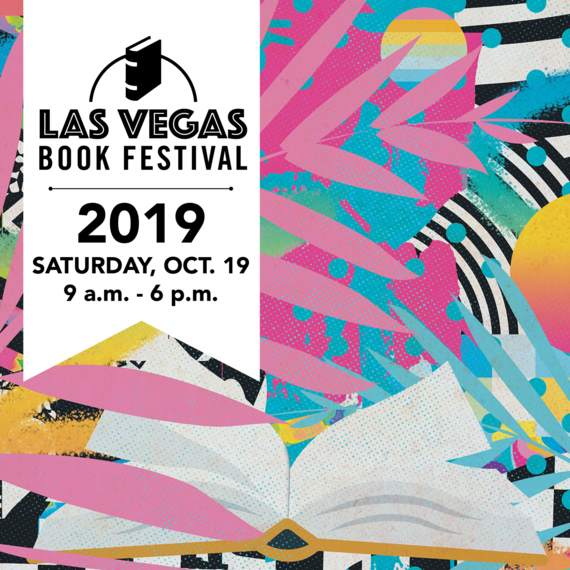Uncovering the Traces
By Joan Robinson
As long as I can remember, I have been fascinated with ruins. Maybe it started with that picture of my father as a college boy standing shirtless in the Coliseum, thumb pointing downward with the ruthless arrogance of a petulant Caesar. Or maybe it started with our family’s monthly visits to Detroit, already crumbling to ruin in the 1970s. Whatever started it, the Mojave Desert has offered me a wealth of atmospheric, tumble-down facades to explore from Rhyolite to Goldfield, to Nelson’s Techatticup Mine, and then just over the border to the Liberty Bell Arc. There are ghost towns and abandoned mines aplenty to explore.
One of my favorite sites is the remains of St. Thomas, a small but once-thriving farm community just outside of Overton, Nevada. Unlike those abandoned mines that collapsed once the gold or silver ran out, or even unlike Detroit, which suffered from the malaise of racism, white flight, and the collapse of the auto industry, St. Thomas was cut down in its prime through no fault of its own except unlucky geography.
When Hoover Dam was built, the stoppered Colorado River filled up the canyon and became Lake Mead. Unfortunately, St. Thomas had perched itself on the banks of the Colorado in the 19th century in order to connect its settlement with Utah. Once the river’s banks overran, water engulfed the town from root cellar to church spire.
Decades later, drought hit the valley and the lake receded, exposing a tracery of foundations and porch steps. Someone at the Lost City Museum in Overton drew a map to identify the remains of the various buildings. So my husband Gregory and I picked up a copy and hiked out through the bleached and brittle reeds to find traceries of the old town.
We had come to explore and to make a poetry video, St Thomas, Nevada, for Nevada Humanities. Bobbie Ann Howell, a Program Manager with Nevada Humanities in Las Vegas, has been a wonderful supporter of local poets and poetry, and she always comes up with innovative shows. She asked us to make something visual so she could make a t-shirt with QR codes on it. I used an iPhone app called 8 mm to shoot it. Nothing fancy. The only reason it looks like a coherent piece of work is thanks to Gregory’s mad editing skills. I wrote the poem later over the next couple of days and then we used Camtasia to record the sound over it. I wanted to capture that sense of place-lessness and place that often occurs together in the desert. Even though we went out with a mission that day, we often stumble upon graffiti-marked shacks or rusty tuna cans or warped mining machinery. The desert feels so vast, quiet, and inhuman until you find some traces of other people who tried to make a mark on it, or like the other tourists, at least took a picture.
St. Thomas Nevada
By Joan Robinson
The town is dry now; its crumbled blond walls hidden in between the gray and black stalks
of dead marsh reeds.
We hold up the hand-drawn map we purchased
at the Lost City Gift Shop.
Is that the ice cream parlor?
Hey, I think that’s the school over there.
You search your phone for the photos others took;
the same foundation on its small screen
and a group of bright-jacketed tourists
standing in a row.
For a moment, their image hovers
in the present desert
our desert
as we check the caption.
Yes, this is the Gentry Hotel
In 1938, the Colorado River bellied and stretched
became Lake Mead.
Flooded.
This valley and all its
features erased
Hugh Lord sculled away from his home for the last time.
Ten years later, two young women fished in a
St. Thomas basement, their legs gleaming and their rods taut.
In the sixties, water receded.
The town families returned,
spread blankets between the walls
of what was once their homes
and had a picnic.
Watch Joan Robinson’s poetry video of St. Thomas Nevada. Joan’s poetic creation, Mira The Wonderful Star, is included in Imagine Nevada: Nevada Artists and Poets Celebrate 10 Years of Illustrated Word Exhibitions, which is on display at the Nevada Humanities Program Gallery in Las Vegas until November 26, 2019. This exhibition is a celebration with the Las Vegas Book Festival.
Joan Robinson graduated from University of Nevada, Las Vegas with an MFA in creative writing. She teaches English at the College of Southern Nevada and leads poetry workshops in rural Nevada schools. Her work has recently appeared in the anthologies Clark: Poetry from Clark County, Nevada and Legs of Tumbleweeds, Wings of Lace, as well as several journals including Blacktop Passages, Helen, Fox Adoption, 300 Days of Sun, and Interim. When not writing, she enjoys creative wandering with her husband and their dog in the Mojave’s vast spaces.
Images/Joan Robinson



